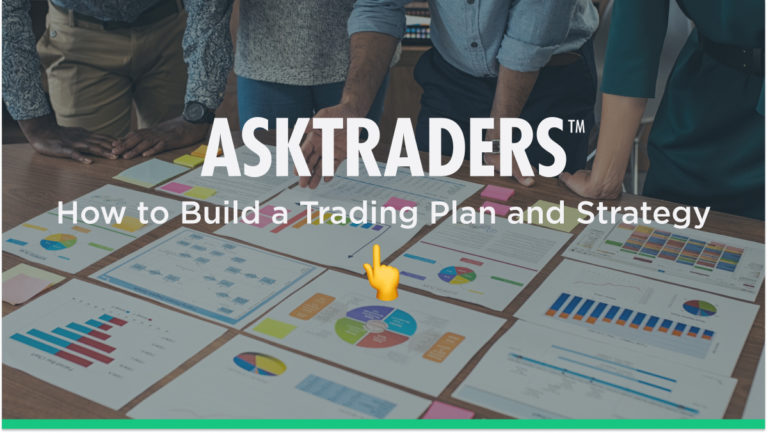
However, being successful in trading is by no means easy – an average of 76% of traders lose money when trading CFDs. Successful traders need to be dedicated and diligent. They must understand that for most, trading isn’t about getting rich quick by following risky strategies. There are safe ways to trade – by following a trading strategy and being patient. Those who plan on becoming a successful trader and want to understand what they must do to achieve that should follow a trading plan.
In this article, we are going to focus on how to formulate a trading strategy or plan, more specifically looking at the following:
- Learning as Much as You Can
- Learning the Different Types of Analysis
- Deciding on Which Markets to Trade
- Timeframes – What Sort of Trader Are You Going to Be?
- Trading Decisions
- Measure Your Trading Success – Keep a Trading Journal
- Risk Management
Learning as Much as You Can
Education is paramount in order to become successful at trading. It is important that a new trader is educated on and understands the core principles of trading in markets and technical analysis. It is essential that traders keep up to date with geopolitical news that can have pronounced effects on financial markets across the globe.
Learning the Different Types of Analysis
When formulating a trading plan, there are three core types of analysis that traders should understand:
- Fundamental/macroeconomic analysis
- Sentiment analysis
- Technical analysis
Fundamental/Macroeconomic Analysis
Fundamental analysis is used by traders to analyse microeconomic, macroeconomic and geopolitical factors that could influence price. This consists of macroeconomic factors such as the state of the current economy (e.g., employment rates and interest rates); microeconomic factors, including the effectiveness of the company management and the company financial reports; and geopolitical factors such as wars or political events. By examining these influences and understanding how they can impact the demand and supply for a given asset, the trader can decide whether an asset is overvalued or undervalued.
Sentiment Analysis
Sentiment analysis is used in trading to study the thoughts and attitudes of investors and market analysts on a given asset. There are multiple different ways that sentiment analysis can be utilised, but the most common is through the use of sentiment indicators. These indicators include market analysts’ recommendations, insider selling and buying activity, and social media interest. By analysing the sentiment indicators, traders can better understand the market’s general perception of whether that asset’s value is going to move up or down.
Technical Analysis
Technical analysis is used by traders to study financial market price action in order to understand patterns in the market. It uses the idea that asset prices have recurring patterns and, therefore, by analysing trends and patterns in asset price movements, it is possible to predict future asset price movements. Technical analysis uses market charts paired with technical indicators in order to determine the patterns in market prices. This then allows traders to decide whether to buy or sell an asset.
Decide on Which Markets to Trade

You must decide which markets you will trade in and base your trading strategy on. Your trading plan may be for a particular asset in one market or may cover multiple assets across one or many markets. You will need to test and try your strategy over time on different assets and markets to determine which strategy is effective for you in each situation.
Timeframes – What Sort of Trader Are You Going to Be?
Timeframes are important to consider when formulating your trading strategy. You may be a day trader who only holds positions for a few hours at a time, and it is therefore imperative that you closely monitor the markets. Alternatively, if you plan to hold positions over an extended period of time, you will not need to watch the markets as closely and therefore you don’t need to invest as much of your time into trading.
Trading Decisions
Market Direction
After you have settled upon what market and asset you want to trade, with the right strategy, over a certain timeframe, it is important to decide from your previous analysis which way you will place your trade. This is either to buy or sell the given asset. This should be closely linked to the type of analysis you use in your strategy.
Trade Entry
When you have decided through analysis whether to buy or sell a market, a trader’s next job is to determine where they will enter the long or short position. Also, the trader must decide when the trade should be entered. This could be either at a certain time or when a market breaks or moves to a specified price level.
Target
A take-profit target level for a trade is critical to trading success and any healthy trading plan. Rather than just choosing an arbitrary level for your trade exit point, it makes more sense to place the target at a level that is either below a key resistance point or above a notable support level.
Stop loss
Before a trade is entered, it is imperative that a stop loss is added. This is to prevent excessive losses on trades. It is crucial that the stop loss is placed at a price level in which your market view is changed, and you no longer want to hold the position.
Measure Your Trading Success – Keep a Trading Journal
Studying your previous trades and seeing where you were successful or where you made mistakes is important for traders. The easiest way to do this is by keeping a trading journal in which you log all your trades and make notes of your reasons for executing trades. It is also important to note your mood upon placing each trade, as this can influence your ability to make effective trading decisions.
Risk Management
Risk management is an important thing to consider for newcomers to trading. Typically, a trader shouldn’t use more than 1% of their funds on a single trade. The risk-reward ratio should also be considered when placing a trade.
Strategy-Building Takeaways
If you use the above factors to help successfully formulate your trading plan, you will be closer to becoming a more profitable trader. It is important to use all of these factors to build your plan. This includes educating yourself on trading fundamentals; analysing the asset you want to trade; considering timelines, market direction, targets, stop loss and risk management; and keeping a trading journal. If you ensure that all of these factors are covered in your plan, then you are one step closer to becoming a more successful trader.
Now that you have a better understanding of how to build a trading plan, it is time to put this into practice. We would advise reviewing the AskTraders trusted broker list to find the broker that is best for you!
